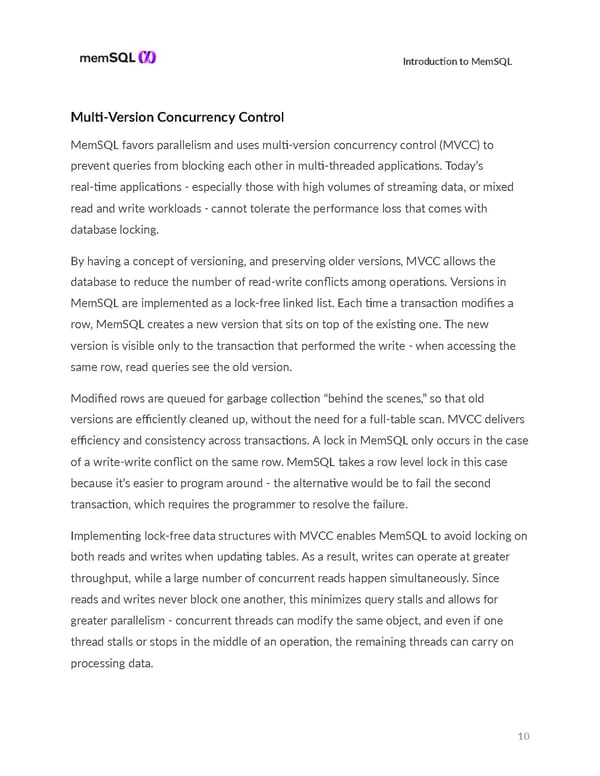I ntroducon to MemSQL Mul-Version Concurrency Control MemSQL favors parallelism and uses mul-version concurrency control (MVCC) to prevent queries from blocking each other in mul-threaded applicaons. Today’s real-me applicaons - especially those with high volumes of streaming data, or mixed read and write workloads - cannot tolerate the performance loss that comes with database locking. By having a concept of versioning, and preserving older versions, MVCC allows the database to reduce the number of read-write conflicts among operaons. Versions in MemSQL are implemented as a lock-free linked list. Each me a transacon modifies a row, MemSQL creates a new version that sits on top of the exisng one. The new version is visible only to the transacon that performed the write - when accessing the same row, read queries see the old version. Modified rows are queued for garbage collecon “behind the scenes,” so that old versions are efficiently cleaned up, without the need for a full-table scan. MVCC delivers efficiency and consistency across transacons. A lock in MemSQL only occurs in the case of a write-write conflict on the same row. MemSQL takes a row level lock in this case because it’s easier to program around - the alternave would be to fail the second transacon, which requires the programmer to resolve the failure. Implemenng lock-free data structures with MVCC enables MemSQL to avoid locking on both reads and writes when updang tables. As a result, writes can operate at greater throughput, while a large number of concurrent reads happen simultaneously. Since reads and writes never block one another, this minimizes query stalls and allows for greater parallelism - concurrent threads can modify the same object, and even if one thread stalls or stops in the middle of an operaon, the remaining threads can carry on processing data. 10
 Technical Introduction to MemSQL Page 9 Page 11
Technical Introduction to MemSQL Page 9 Page 11